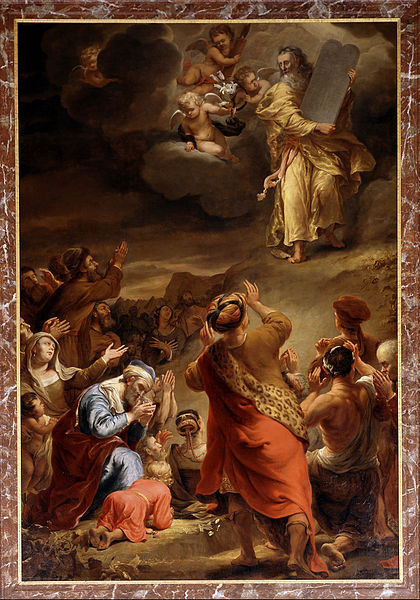The Ten Commandments, a foundational set of moral and ethical principles, hold a significant place in the religious and cultural history of the world.
Believed to have been given by God to the prophet Moses on Mount Sinai, these commandments serve as a guide for human behavior and the basis for ethical and legal systems in many societies.
List of the Ten Commandments:
- You shall have no other gods before me.
- You shall not make for yourself a graven image or any likeness of anything.
- You shall not take the name of the Lord your God in vain.
- Remember the Sabbath day, to keep it holy.
- Honor your father and your mother.
- You shall not murder.
- You shall not commit adultery.
- You shall not steal.
- You shall not bear false witness against your neighbor.
- You shall not covet anything that belongs to your neighbor.
In this exploration, we will delve into some key facts about the Ten Commandments, shedding light on their origins, content, and enduring impact on religious, moral, and legal thought.
The Ten Commandments Facts
1. Origin: Given by God to Moses on Mount Sinai
The Ten Commandments are believed to have originated as a set of moral and ethical principles given by God to the prophet Moses on Mount Sinai.
According to the biblical account in the Book of Exodus, this event occurred after the Israelites had been freed from slavery in Egypt and were journeying through the wilderness toward the Promised Land.
Also Read: Facts About Moses
God summoned Moses to the top of Mount Sinai, where He revealed the commandments to him. This event is considered a pivotal moment in the religious history of the Israelites and a foundational moment in the Abrahamic faiths.

2. Biblical Source: Found in the Book of Exodus
The primary biblical source for the Ten Commandments is Exodus 20:1-17 in the Old Testament of the Bible. In this passage, the commandments are listed, with each one presented as a succinct moral and ethical directive.
Also Read: Mary Mother of Jesus Facts
While Exodus is the primary source, the commandments are also referenced and elaborated upon in other parts of the Bible, such as the Book of Deuteronomy.
3. Tablets: Inscribed on two stone tablets
According to the biblical narrative, after God revealed the Ten Commandments to Moses on Mount Sinai, He inscribed them on two stone tablets.
These tablets were believed to be made of stone, and the commandments were written by the “finger of God,” signifying their divine origin and importance.
These stone tablets are commonly depicted in religious art and are often associated with the Ark of the Covenant, a sacred container that was said to house the tablets and other significant relics.
The tablets symbolize the enduring nature of the commandments and the covenant between God and the Israelites.
4. Numbering: Various numbering schemes exist
The numbering of the Ten Commandments can vary among different religious traditions and denominations. The most widely recognized numbering system is the one found in the Exodus 20:1-17 passage of the Bible.
However, there are variations, especially among different Christian denominations. The most notable difference is between Catholic, Protestant, and Jewish traditions:
- Catholic and Lutheran Numbering: These traditions combine the first two commandments into one and divide the tenth commandment into two separate commandments, resulting in a total of ten commandments.
- Protestant Numbering: Many Protestant denominations follow the traditional numbering, with separate commandments for the first two and a single commandment for the tenth, resulting in a total of ten commandments.
- Jewish Numbering: The Jewish tradition generally follows the same numbering as the Protestant tradition but with slight differences in the wording of some commandments.
5. Universality: Considered universal moral guidelines
The principles of the Ten Commandments are considered universal moral and ethical guidelines. While they have their origins in the Judeo-Christian tradition, many of the commandments deal with fundamental moral principles that are recognized and valued by people of various religious and cultural backgrounds.
Concepts such as not murdering, not stealing, and honoring one’s parents, for example, are widely accepted as ethical norms across different societies.

6. Ethical Guidelines: Cover a range of moral issues
The Ten Commandments cover a wide range of ethical and moral issues, providing guidance on how individuals should relate to God and to one another.
They include instructions on monotheism, worship, family relationships, personal conduct, and interpersonal ethics. As such, they serve as a comprehensive set of principles for leading a morally upright life.
7. Monotheism: Emphasize belief in one God
The first commandment emphasizes monotheism, the belief in one God. It states, “You shall have no other gods before me.”
This commandment is foundational to the Abrahamic religions (Judaism, Christianity, and Islam), all of which uphold the belief in the existence of a single, all-powerful deity.
This commandment serves as a central tenet of faith and underscores the exclusive worship of God in these religions, rejecting the worship of multiple deities or idols.
8. Influence: Shaped Western legal systems
The Ten Commandments have had a profound influence on Western legal systems, moral philosophy, and ethical codes.
They have been incorporated into the legal and moral traditions of many Western societies and have contributed to the development of laws related to murder, theft, perjury, and other ethical matters.
Additionally, they have played a significant role in shaping the ethical frameworks of various religious and philosophical traditions.

9. Religious Significance: Revered in Judaism and Christianity
The Ten Commandments are highly revered by adherents of Judaism, Christianity, and Islam. They are considered a central part of the divine covenant between God and humanity.
In Judaism, the commandments are often referred to as the “Aseret HaDibrot” and are a foundational aspect of Jewish law and theology.
In Christianity, they are seen as an expression of moral and ethical principles, and they are prominently displayed in churches and religious literature.
In Islam, some scholars and theologians consider the commandments to be in line with Islamic ethics, even though they are not explicitly listed in the Quran.
10. Depictions in Art: Popular subject in art
The story of Moses receiving the Ten Commandments on Mount Sinai has been a popular subject in art throughout history.
Famous artistic representations, such as Michelangelo’s frescoes in the Sistine Chapel, depict this iconic moment in religious history. These artistic depictions have contributed to the cultural significance and recognition of the Ten Commandments.
